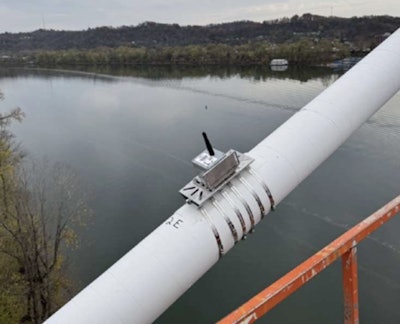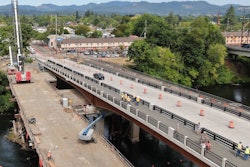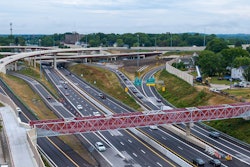
Engineers at the West Virginia Department of Transportation have spent the last two years monitoring one of the state’s bridges through a new system that detects stress and damage.
West Virginia’s Structural Health Monitoring system, funded by a U.S. Department of Transportation Strengthening Mobility and Revolutionizing Transportation grant, provides real-time data through a network of sensors. Engineers can then address threats that could otherwise go undetected for months.
The system was first implemented in Fall 2023 on the Gunner Gatski Bridge, a 900-foot cable-stayed span that crosses the Ohio River in Huntington and handles over 14,000 vehicles per day.
The WVDOT received $812,000 in fiscal year 2022 to implement the system through a collaboration with engineering firm HNTB and Marshall University in Huntington.
The system uses sensors, including accelerometers, tiltmeters, crackmeters, displacement sensors, a weather station and a vessel collision detection system to monitor the bridge’s health. The wireless sensors are battery powered and have a life expectancy of eight years.
The system has also measured the bridge’s response to a 3.3 magnitude earthquake in real time, as well as captured its response to temperature fluctuations.
West Virginia has become the first state to use a Stage One SMART Grant for advanced bridge monitoring, and it can now compete for a Stage Two SMART Grant to expand the SHM system to other high-risk bridges with up to $15 million in funding. Should it win, WVDOT and its project partners will expand the project to the following six additional Ohio River bridges, with the goal of creating a scalable and repeatable system:
- Veteran’s Memorial Bridge
- Wellsburg Bridge
- Fort Henry Bridge
- Arch A Moore Jr. Bridge
- Blennerhasset Island Bridge
- Bridge of Honor
The USDOT SMART discretionary grant program was established in 2021 through the Biden-era Infrastructure Investment and Jobs Act and is funded through $100 million appropriated annually for fiscal years 2022 through 2026. The program aims to finance advanced community technology demonstrations for eligible agencies.










